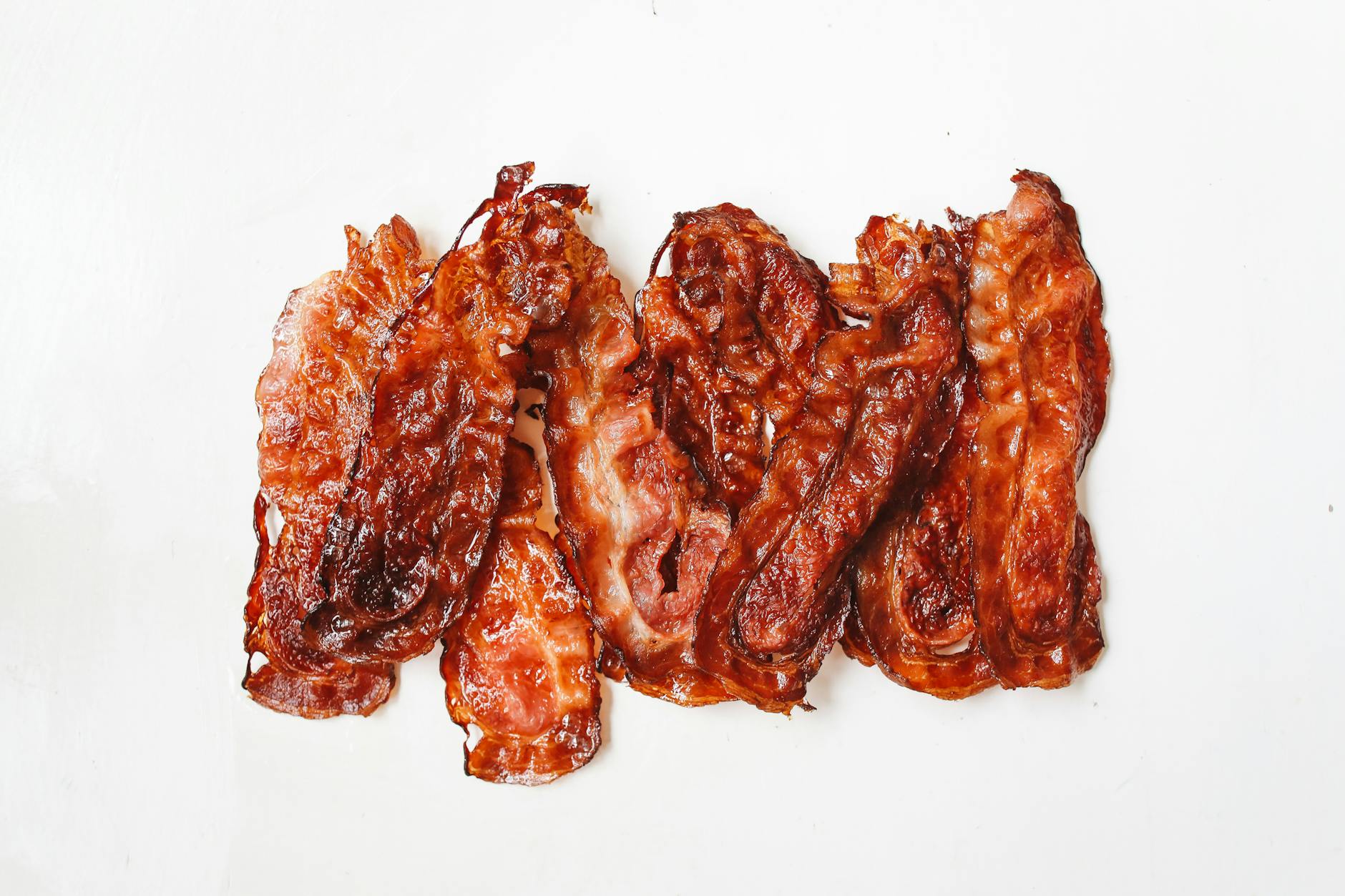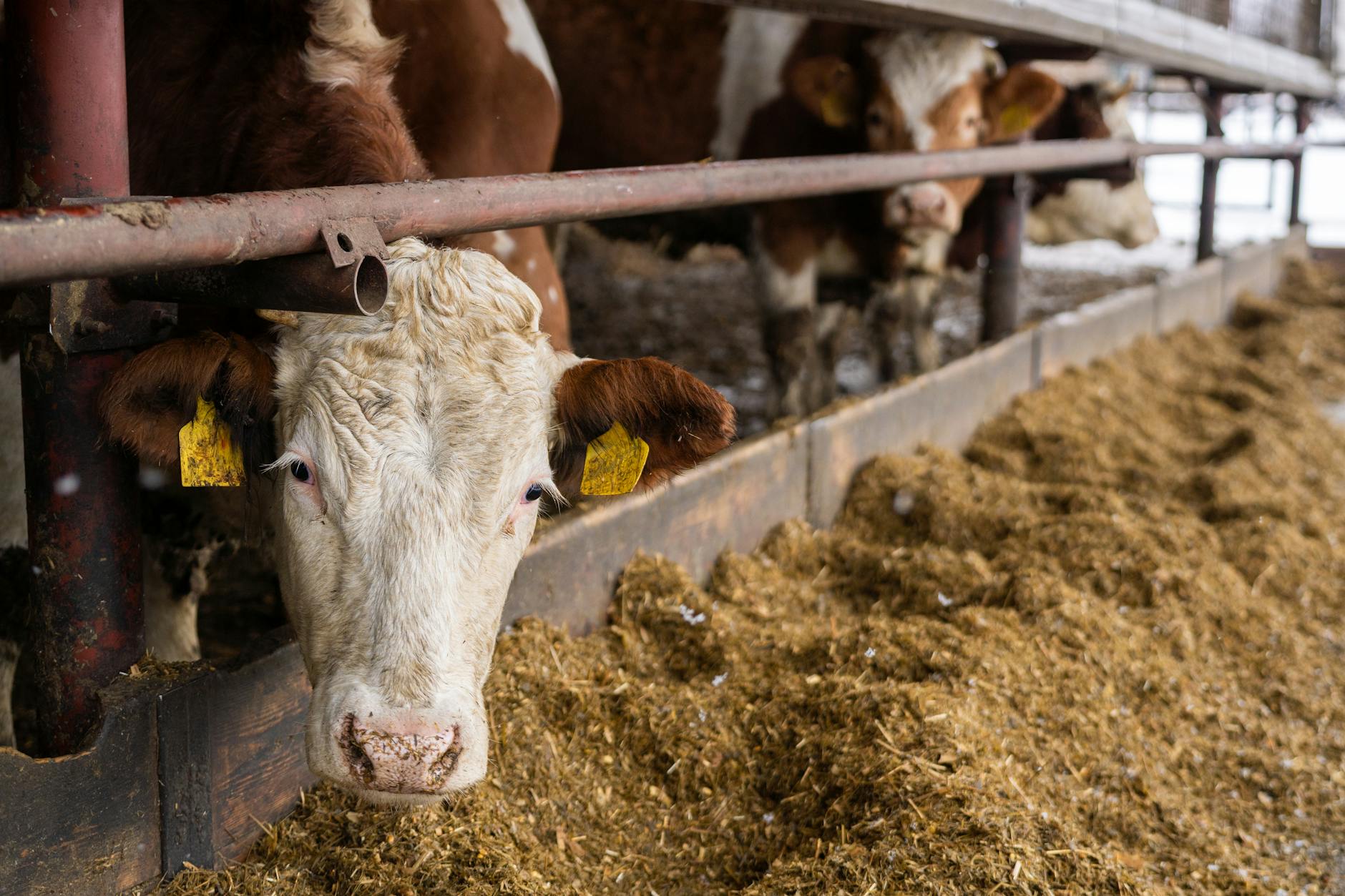Are you struggling to find keto-friendly snacks that satisfy your cravings? 🤔 Look no further than yogurt! This creamy, versatile treat can be a perfect addition to your ketogenic diet when chosen wisely. But with so many options on the market, it's easy to feel overwhelmed and unsure about which yogurts align with your low-carb goals.
Don't worry – we've got you covered! 🙌 In this blog post, we'll dive deep into the world of keto-friendly yogurts, exploring everything from animal-based proteins to dairy alternatives and plant-based options. We'll also share some mouthwatering recipes and clever tips to help you incorporate yogurt into your keto lifestyle without derailing your progress.
Ready to discover how yogurt can become your new keto best friend? Let's explore the various food groups that make up a well-rounded ketogenic diet, starting with animal proteins and moving through dairy, vegetables, and other essential components. By the end of this post, you'll be equipped with the knowledge to make informed choices and enjoy yogurt while staying in ketosis. 🥄🥛
1–3. Animal proteins
A. Seafood
Seafood is an excellent protein source for those following a keto diet. Rich in omega-3 fatty acids and low in carbohydrates, seafood options like salmon, tuna, and sardines are perfect for maintaining ketosis. Here's a comparison of popular seafood choices:
| Seafood | Protein (g/100g) | Fat (g/100g) | Net Carbs (g/100g) |
|---|---|---|---|
| Salmon | 20 | 13 | 0 |
| Tuna | 30 | 1 | 0 |
| Sardines | 25 | 11 | 0 |
| Mackerel | 19 | 14 | 0 |
B. Meat and poultry
Meat and poultry are staples in a keto diet, providing high-quality protein and essential nutrients. Opt for fatty cuts to increase your fat intake while keeping carbs low. Some excellent choices include:
- Chicken thighs with skin
- Grass-fed beef
- Pork belly
- Duck
C. Eggs
Eggs are a versatile and nutritious food that fits perfectly into a keto diet. They're rich in protein, healthy fats, and contain nearly zero carbs. One large egg provides about 6g of protein and 5g of fat. Consider incorporating eggs into your meals through various cooking methods like boiling, frying, or making omelets.
Now that we've covered animal proteins, let's explore dairy and dairy alternatives that can complement your keto diet.
4–7. Dairy and dairy alternatives

A. Cheese
Cheese is a keto dieter's best friend, offering high fat content and minimal carbs. Most varieties are keto-friendly, with hard cheeses like cheddar, parmesan, and gouda being particularly low in carbs. Soft cheeses like brie and camembert are also excellent choices. Remember, always opt for full-fat versions to maximize your fat intake while keeping carbs low.
| Cheese Type | Fat (g) | Protein (g) | Net Carbs (g) |
|---|---|---|---|
| Cheddar | 9 | 7 | 0.4 |
| Brie | 8 | 5 | 0.1 |
| Gouda | 8 | 7 | 0.6 |
| Parmesan | 7 | 10 | 0.9 |
B. Plain Greek yogurt and cottage cheese
Greek yogurt and cottage cheese are excellent keto-friendly dairy options. Greek yogurt, in particular, is a versatile ingredient in many low carb yogurt recipes. Opt for plain, full-fat versions to keep carbs low and fat content high. These protein-rich options can be enjoyed on their own or used as a base for keto-friendly desserts and smoothies.
C. Cream and half-and-half
Heavy cream and half-and-half are high-fat dairy products that fit well into a ketogenic diet. They're perfect for adding richness to coffee or using in keto-friendly sauces and desserts. Heavy cream, in particular, is almost carb-free, making it an ideal choice for those strictly monitoring their carb intake.
D. Unsweetened plant-based milk
For those avoiding dairy, unsweetened plant-based milk alternatives can be keto-friendly options. Almond milk, coconut milk, and macadamia nut milk are excellent low-carb choices. Always check the label to ensure there are no added sugars or carbs. These can be used in smoothies, keto baking, or as a dairy-free alternative in your morning coffee.
Now that we've covered dairy and its alternatives, let's move on to explore the world of keto-friendly vegetables.
8–12. Vegetables

A. Green leafy vegetables
Green leafy vegetables are a cornerstone of the ketogenic diet, providing essential nutrients with minimal carbohydrates. Spinach, kale, and Swiss chard are excellent choices, offering high fiber content and rich in vitamins A, C, and K. These vegetables are versatile and can be easily incorporated into salads, smoothies, or sautéed as side dishes.
B. Peppers
Bell peppers, particularly the green variety, are keto-friendly due to their lower carb content compared to their colorful counterparts. They're an excellent source of vitamin C and can add a satisfying crunch to your meals. Spicy peppers like jalapeños or habaneros can also be enjoyed in moderation, adding flavor without significantly impacting carb intake.
C. Summer squash
Zucchini and yellow squash are popular low-carb options that can be used creatively in keto recipes. They're versatile vegetables that can be spiralized into "zoodles" as a pasta alternative or grilled as a side dish. Summer squash is rich in vitamins A and C, as well as potassium.
D. High fat veggies
While not typically associated with high fat content, some vegetables can contribute to your fat intake on a keto diet. Avocados, technically a fruit but often used as a vegetable, are an excellent source of healthy fats and fiber. Olives, while also botanically a fruit, are another high-fat option that fits well into a ketogenic eating plan.
E. Other nonstarchy vegetables
| Vegetable | Net Carbs (per 100g) | Key Nutrients |
|---|---|---|
| Cauliflower | 3g | Vitamin C, K |
| Broccoli | 4g | Fiber, Vitamin C |
| Asparagus | 2g | Folate, Vitamin K |
| Mushrooms | 2g | B vitamins, Selenium |
These vegetables are low in carbs but high in nutrients, making them excellent choices for a keto diet. They can be roasted, steamed, or used as substitutes for higher-carb foods.
F. Veggies to avoid on keto
While vegetables are generally healthy, some are too high in carbs for a strict keto diet. Root vegetables like potatoes, carrots, and beets should be limited or avoided. Corn and peas are also high in carbs and should be consumed sparingly. Instead, focus on the low-carb options mentioned above to maintain ketosis while still enjoying a variety of vegetables in your diet.
13–16. Other plant-based foods
Nuts and seeds
Nuts and seeds are excellent additions to a keto diet, offering a perfect balance of healthy fats, protein, and minimal carbs. Almonds, macadamia nuts, and pumpkin seeds are particularly keto-friendly options. These nutrient-dense foods can be easily incorporated into yogurt-based keto recipes, adding crunch and flavor.
| Nut/Seed | Fat (g) | Protein (g) | Net Carbs (g) |
|---|---|---|---|
| Almonds (1 oz) | 14 | 6 | 2.5 |
| Macadamia (1 oz) | 21 | 2 | 1.5 |
| Pumpkin Seeds (1 oz) | 13 | 7 | 1 |
Berries
While fruits are generally limited on a keto diet, berries are an exception. They're lower in carbs compared to other fruits and rich in antioxidants. Strawberries, raspberries, and blackberries can be enjoyed in moderation, making them perfect toppings for your keto-friendly yogurt.
Shirataki noodles
Shirataki noodles, made from konjac yam, are a fantastic low-carb alternative to traditional pasta. These translucent noodles are virtually calorie-free and contain negligible carbs, making them an ideal addition to keto-friendly yogurt-based sauces or cold noodle salads.
Dark chocolate and cocoa powder
For those craving something sweet on a keto diet, dark chocolate (70% cocoa or higher) and unsweetened cocoa powder are excellent options. They're low in carbs and high in antioxidants. Cocoa powder can be mixed into yogurt for a chocolatey treat, while small amounts of dark chocolate can be grated as a topping.
Now that we've explored these keto-friendly plant-based foods, let's move on to discuss the important role of fats and oils in maintaining ketosis.
Fats and oils

Olive oil
Olive oil is a staple in the keto diet due to its high healthy fat content and numerous health benefits. Rich in monounsaturated fats, olive oil helps promote heart health and reduces inflammation. When choosing olive oil for your keto journey, opt for extra virgin olive oil (EVOO) as it retains more nutrients and antioxidants compared to refined varieties.
| Olive Oil Type | Fat Content (per tbsp) | Carbs | Protein |
|---|---|---|---|
| Extra Virgin | 14g | 0g | 0g |
| Virgin | 14g | 0g | 0g |
| Light | 14g | 0g | 0g |
Incorporate olive oil into your keto diet by using it as a salad dressing, drizzling it over cooked vegetables, or using it for low-heat cooking. Its versatility makes it an excellent choice for adding flavor and healthy fats to your meals.
Butter and ghee
Butter and ghee are excellent sources of high-quality fats for those following a ketogenic diet. Both are derived from dairy but have different properties and uses in keto cooking.
Butter is rich in saturated fats and contains small amounts of carbs and proteins. It's perfect for adding richness to dishes and can be used for cooking at moderate temperatures. Opt for grass-fed butter when possible, as it contains higher levels of beneficial nutrients like omega-3 fatty acids and vitamin K2.
Ghee, also known as clarified butter, is butter that has had the milk solids and water removed. This process makes it virtually lactose-free and gives it a higher smoke point, making it ideal for high-heat cooking. Ghee is pure fat, containing no carbs or proteins, making it an excellent choice for strict keto dieters.
| Fat Source | Total Fat (per tbsp) | Saturated Fat | Carbs | Protein |
|---|---|---|---|---|
| Butter | 14g | 9g | 0.01g | 0.12g |
| Ghee | 14g | 9g | 0g | 0g |
Both butter and ghee can be used in various keto recipes, from bulletproof coffee to sautéing vegetables. Their rich, creamy flavors enhance the taste of many dishes while helping you meet your daily fat intake goals on the ketogenic diet.
19–20. Beverages
A. Unsweetened coffee and tea
When following a keto diet, staying hydrated is crucial. Unsweetened coffee and tea are excellent beverage choices that won't kick you out of ketosis. Both drinks are naturally calorie-free and carb-free, making them perfect for maintaining your low-carb lifestyle.
| Beverage | Calories | Carbs | Benefits |
|---|---|---|---|
| Black Coffee | 2 | 0g | Boosts metabolism, improves focus |
| Green Tea | 0 | 0g | Rich in antioxidants, supports fat burning |
| Black Tea | 2 | 0g | Provides energy, may lower blood pressure |
To enhance your coffee or tea without adding carbs, consider using heavy cream or unsweetened almond milk. These additions can provide a creamy texture and extra flavor while keeping your drink keto-friendly.
B. Unsweetened sparkling water
For those who crave something fizzy, unsweetened sparkling water is an excellent alternative to sugary sodas. It's a refreshing, zero-calorie option that can help you stay hydrated while adding variety to your beverage choices.
To make your sparkling water more interesting, try infusing it with keto-friendly ingredients like cucumber slices, lemon wedges, or a few fresh berries. This can add a subtle flavor without compromising your ketosis state.
C. Is keto right for you?
While the ketogenic diet can be effective for weight loss and managing certain health conditions, it's not suitable for everyone. Before embarking on a keto journey, consider your individual health needs, lifestyle, and preferences.
The bottom line
Just one thing
When it comes to yogurt on a keto diet, choosing the right type is crucial. Opt for full-fat, plain Greek yogurt or unsweetened coconut yogurt for the best keto-friendly options. These provide essential nutrients while keeping carbs low, making them perfect for maintaining ketosis.
How we reviewed this article:
| Aspect | Details |
|---|---|
| Research | Comprehensive review of scientific literature on keto diets and dairy consumption |
| Expert Input | Consulted with registered dietitians specializing in ketogenic nutrition |
| User Feedback | Analyzed experiences from keto dieters regarding yogurt consumption |
| Product Testing | Compared nutritional profiles of various yogurt brands and alternatives |
Our team conducted a thorough review process to ensure the accuracy and relevance of the information provided. We combined scientific research with practical insights to offer you the most reliable guidance on incorporating yogurt into your keto lifestyle.
Read this next
To further enhance your keto journey, consider exploring our related articles on low-carb dairy alternatives and keto-friendly dessert recipes. These resources will provide you with additional options to diversify your diet while staying in ketosis. Remember, successful keto eating is about making informed choices and finding delicious alternatives that work for your individual needs and preferences.

Incorporating yogurt into a keto diet can be a delicious and nutritious way to add variety to your meals. From animal proteins to dairy alternatives, vegetables, and plant-based foods, there are numerous options to create satisfying keto-friendly yogurt dishes. By focusing on low-carb ingredients and healthy fats, you can enjoy the benefits of yogurt while maintaining ketosis.
Remember to choose full-fat, unsweetened yogurt varieties and pair them with keto-approved toppings and mix-ins. Experiment with different recipes and flavor combinations to keep your keto journey exciting and sustainable. With these tips and ideas, you can confidently include yogurt in your keto lifestyle while reaping its nutritional benefits.
